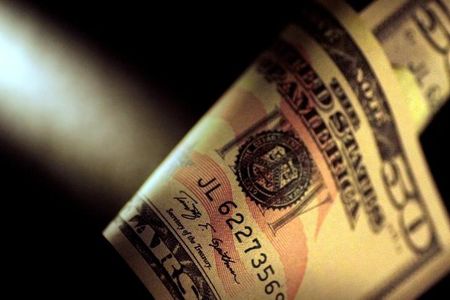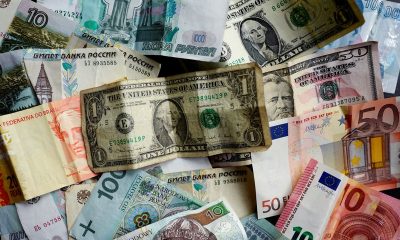Forex
Asia FX weak as dollar hits 5-mth high on hot CPI; yen intervention in focus

Investing.com– Most Asian currencies weakened on Thursday as hotter-than-expected U.S. inflation data put the dollar at a five-month high, while weakness in the Japanese yen saw markets wary of any potential intervention.
Traders were seen largely wiping out bets on a June interest rate cut by the Federal Reserve, presenting more near-term pressure for Asian currency markets.
Soft inflation readings from China also weighed on sentiment, as a deflationary trend in Asia’s biggest economy remained in play.
Dollar at 5-mth high, June rate cut bets vanish
The and fell slightly in Asian trade on Thursday after racing to five-month highs in the prior session.
The greenback was boosted chiefly by hotter-than-expected data for March, which furthered the notion that U.S. inflation was turning sticky above the Fed’s 2% annual target.
The reading, coupled with hawkish , saw traders largely price out expectations for a June rate cut by the central bank. The minutes also came on the heels of repeated warnings from Fed officials over sticky inflation delaying any potential rate cuts.
The prospect of higher-for-longer U.S. interest rates presents more upside for the dollar and bodes poorly for high-risk, high-yield Asian currencies.
Yen intervention in focus as USDJPY tests 153, at 34-year highs
The Japanese yen strengthened slightly on Thursday, with the steadying around 152.86 after surging past 153 in overnight trade. The pair also hit its highest level since 1990.
But further gains in the USDJPY pair were stemmed by anticipation of currency market intervention by the Japanese government.
Several top-level finance officials offered up more warnings on potential currency market intervention on Thursday- specifically Vice Finance Minister Masato Kanda. Kanda had led record levels of intervention in 2022, when the USDJPY pair had last tested 1990 levels.
Chinese inflation weakens, USDCNY near 5-mth high
The Chinese yuan tread water on Thursday, although the pair still remained close to five-month highs.
But further gains in the USDCNY pair were limited by a strong midpoint fix by the People’s Bank.
Data on Thursday showed shrank more than expected in March, while contracted for an 18th consecutive month, presenting a sustained deflationary trend in Asia’s largest economy.
Broader Asian currencies stuck to a flat-to-low range. The Australian dollar’s {{|AUDUSD}} pair rose 0.1% after clocking steep overnight losses, while the South Korean won’s pair also steadied from an overnight surge.
The Singapore dollar’s pair fell less than 0.1%, while the Indian rupee’s pair remained close to record highs above 83.

 Forex3 years ago
Forex3 years agoForex Today: the dollar is gaining strength amid gloomy sentiment at the start of the Fed’s week

 Forex3 years ago
Forex3 years agoUnbiased review of Pocket Option broker

 Forex3 years ago
Forex3 years agoDollar to pound sterling exchange rate today: Pound plummeted to its lowest since 1985

 Forex3 years ago
Forex3 years agoHow is the Australian dollar doing today?

 Cryptocurrency3 years ago
Cryptocurrency3 years agoWhat happened in the crypto market – current events today

 World3 years ago
World3 years agoWhy are modern video games an art form?

 Commodities3 years ago
Commodities3 years agoCopper continues to fall in price on expectations of lower demand in China

 Economy3 years ago
Economy3 years agoCrude oil tankers double in price due to EU anti-Russian sanctions


























